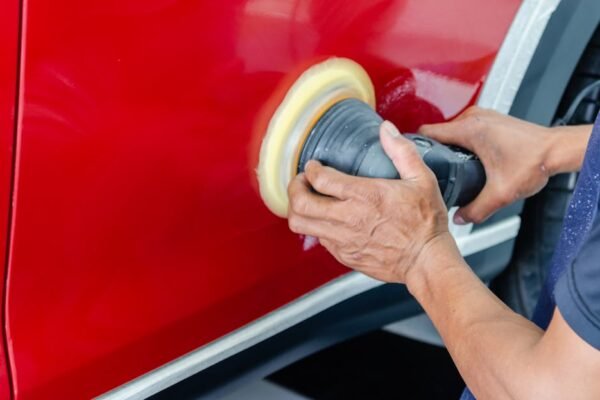Introduction to Efficient Workflows
{“type”:”img1″,”src”:”http://roadrevamp.com/wp-content/uploads/2024/03/fileUpload-421.jpg”,”alt”:”office productivity”}Efficiency in work processes is not only about saving time; it's about maximizing productivity without compromising quality. In today's fast-paced work environment, mastering the art of efficient workflows is crucial for success. This article delves into strategies that can enhance your workflow, ensuring that you're not just busy, but productively busy.
An efficient workflow minimizes redundancy and streamlines tasks in a manner that significantly boosts output. The key lies in identifying bottlenecks and eliminating them, thereby speeding up the process without sacrificing the end result.
Understanding the principles of workflow efficiency begins with comprehending the dynamics of your current process. It involves scrutinizing your methods, tools, and the sequence of tasks to pinpoint areas of improvement. This foundation sets the stage for the transformative strategies we'll explore.
Implementing the strategies discussed in this article can lead to significant advancements in your work processes. These enhancements not only elevate your productivity but also improve job satisfaction by reducing stress and creating a more organized work environment.
The journey to optimized workflows is ongoing. As technologies and methodologies advance, so do the opportunities to refine and perfect your processes. Staying informed and adaptable is key to ongoing success in this area.
Strategies for Streamlining Tasks
Streamlining tasks is fundamental to achieving efficient workflows. The focus here is on simplifying processes to eliminate unnecessary steps and employing the right tools to aid in task management. Implementing task management software can be a game-changer, offering insights into your productivity patterns and helping prioritize tasks effectively.
One effective technique is batching similar tasks together. This approach minimizes context switching, allowing for deeper focus and higher efficiency. Additionally, setting clear priorities ensures that you're spending time on tasks that offer the greatest return on investment.
Delegation is another critical factor in streamlining tasks. It's essential to recognize tasks that can be better handled by others. This not only lightens your workload but also empowers your team, fostering a culture of trust and collaboration.
Automating repetitive tasks can also lead to a significant increase in efficiency. Modern technology offers numerous tools designed to automate various aspects of work. Identifying and implementing these tools can free up valuable time that can be better spent on more complex, value-adding activities.
Finally, regular review of your workflow processes can uncover new opportunities for improvement. Staying proactive in identifying and addressing inefficiencies ensures that your workflow remains optimized.
Enhancing Collaboration Among Teams
{“type”:”img1″,”src”:”http://roadrevamp.com/wp-content/uploads/2024/03/fileUpload-422.jpg”,”alt”:”team collaboration”}Collaboration is a cornerstone of any efficient workflow. Facilitating seamless interaction among team members can dramatically improve productivity and output quality. Utilizing collaboration tools can help bridge communication gaps, ensuring everyone is on the same page.
Establishing clear communication channels is paramount. This involves not only selecting effective tools but also setting guidelines for their use. Ensuring that everyone understands how to communicate efficiently reduces misunderstandings and streamlines collaboration.
Regular team meetings, while seemingly counterintuitive to efficiency, can actually enhance it when conducted effectively. These meetings offer opportunities to align on goals, discuss progress, and brainstorm solutions to challenges.
Building a culture of open feedback is also essential. Encouraging team members to share their insights and suggestions can uncover hidden inefficiencies and foster a sense of ownership and engagement within the team.
Lastly, recognizing and celebrating successes not only boosts morale but also reinforces the value of effective collaboration. It highlights the impact of collective effort on achieving efficient workflows.
Optimizing Your Workspace for Maximum Efficiency
An often overlooked aspect of workflow efficiency is the physical and digital workspace. Optimizing these environments can lead to significant improvements in focus and productivity. A clutter-free physical workspace reduces distractions and creates a conducive environment for focused work.
Similarly, organizing your digital workspace can streamline your workflow. This involves keeping your digital files and apps organized and ensuring that essential tools are easily accessible. Employing techniques like keyboard shortcuts can also enhance efficiency in navigating digital tasks.
Investing in ergonomic tools and furniture not only contributes to a healthier work environment but can also boost productivity by reducing discomfort and fatigue.
Finally, personalizing your workspace can improve comfort and satisfaction, subtly enhancing your motivation and efficiency. Small changes, such as adjusting lighting or adding plants, can make a significant difference.
Both the physical and digital aspects of your workspace play a crucial role in workflow efficiency. Taking the time to optimize both can lead to substantial benefits.
Conclusion
In conclusion, mastering the art of efficient workflows is a multifaceted endeavor. It involves streamlining tasks, enhancing collaboration, and optimizing your workspace, among other strategies. Each element contributes to a more productive and satisfying work experience.
Implementing the strategies outlined in this article can lead to significant improvements in your workflow. However, the key to sustained success lies in continuous evaluation and adaptation. As you refine your processes and incorporate new efficiencies, you'll find that achieving and maintaining optimized workflows is indeed possible.
Remember, the journey to efficiency is ongoing. Embrace change, stay informed, and be proactive in seeking out opportunities for improvement. By doing so, you'll not only enhance your productivity but also your overall job satisfaction and success.





